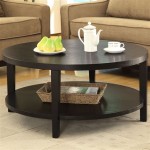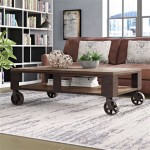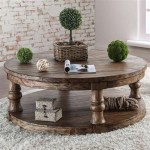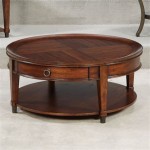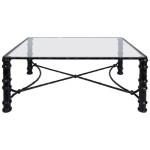Standard Dining Table Dimensions: A Comprehensive Guide
The dining table serves as a central gathering point in the home, facilitating meals, conversations, and social interactions. Selecting a dining table of appropriate dimensions is crucial for ensuring comfortable seating, adequate space for serving dishes, and a harmonious aesthetic within the dining area. This article provides a comprehensive overview of standard dining table dimensions, guiding readers through the various factors to consider when choosing the ideal table for their specific needs and space.
Understanding the Dimensions: Length, Width, and Height
Dining table dimensions are typically described in terms of length, width, and height. Length refers to the longest dimension of the table, usually spanning the distance parallel to where people are seated. Width refers to the shorter dimension, perpendicular to the length. Height is the vertical distance from the floor to the tabletop. Each of these dimensions plays a critical role in determining the table's functionality and suitability for a given space.
The standard height for a dining table is generally between 28 and 30 inches (71 to 76 cm). This height allows for comfortable legroom for most adults when seated in standard dining chairs, which typically have a seat height of around 18 inches (46 cm). Variations in table height can occur, particularly for farmhouse-style tables which might be slightly taller, or for tables designed to accommodate bar-height seating, which would naturally be much higher.
Length and width dimensions are more variable, depending on the desired seating capacity and the shape of the table. These measures are closely tied to the number of people who will regularly use the table. A smaller apartment might only require a table that comfortably seats two to four people, while a larger family or those who frequently entertain will need a table with greater seating capacity.
Standard Table Shapes and Corresponding Dimensions
Dining tables are available in a variety of shapes, each with its own typical dimensions and suitability for different room layouts. The most common shapes include rectangular, square, round, and oval, each presenting unique spatial considerations.
Rectangular Tables: Rectangular tables are a popular choice due to their versatility and ability to accommodate a large number of people. The most common rectangular dining table sizes are determined by the number of diners they are intended to seat.
For a table seating 4 people, a rectangular table typically measures between 48 and 60 inches (122 to 152 cm) in length and 36 to 42 inches (91 to 107 cm) in width. This provides ample space for each diner and allows for placemats, dishes, and serving ware.
A table seating 6 people generally requires a length of 60 to 72 inches (152 to 183 cm) and a width of 36 to 42 inches (91 to 107 cm). This size allows for comfortable seating without feeling cramped.
For 8 people, a rectangular table should ideally be 72 to 96 inches (183 to 244 cm) long and 36 to 48 inches (91 to 122 cm) wide. This accommodates larger dinner parties or families with plenty of space.
Larger rectangular tables seating 10 or more people can range from 96 inches (244 cm) upwards, with the width remaining typically between 42 to 48 inches (107 to 122 cm). For such large tables, considering the overall room size and traffic flow is essential.
Square Tables: Square dining tables are well-suited for smaller spaces and are often used in apartments or breakfast nooks. They are ideal for seating 2 to 4 people comfortably. A square table for 4 people generally measures around 36 to 48 inches (91 to 122 cm) on each side. This provides a compact and intimate dining setting.
Round Tables: Round tables promote conversation and create a sense of intimacy. They are particularly effective in smaller dining areas where they can facilitate easier movement around the table. The diameter of a round table determines its seating capacity.
A round table with a diameter of 36 to 48 inches (91 to 122 cm) can comfortably seat 4 people. A 48- to 60-inch (122 to 152 cm) diameter table is suitable for seating 4 to 6 people. For 6 to 8 people, a round table with a diameter of 60 to 72 inches (152 to 183 cm) is recommended. Round tables larger than 72 inches in diameter can become impractical, as reaching dishes in the center becomes difficult.
Oval Tables: Oval tables offer a compromise between rectangular and round tables, providing the elongated seating capacity of a rectangle with the softer lines of a circle. Their dimensions are similar to rectangular tables, but with rounded ends. Generally, an oval table designed for 6 people would require similar length and width as a rectangular table designed for 6, which is 60 to 72 inches (152 to 183 cm) in length and 36 to 42 inches (91 to 107 cm) in width. However, the absence of sharp corners can make the table feel less imposing in smaller spaces.
Factors Beyond Dimensions: Space, Seating, and Style
While the dimensions of a dining table are a primary consideration, several other factors influence the overall success of the dining area. These include the available space, the type of seating, and the overall style and aesthetic of the room.
Space Considerations: The most important consideration is ensuring enough "walk around" space. A general guideline is to allow at least 36 inches (91 cm) of clearance between the table edge and any walls or furniture. This allows people to move around the table comfortably without bumping into objects. For high-traffic areas, such as hallways or doorways, it is preferable to have even more clearance, perhaps 42 to 48 inches (107 to 122 cm). Accurately measuring the dining area is paramount before selecting a dining table. Consider the placement of other furniture, such as sideboards, buffets, or china cabinets, as these will reduce the available space.
Seating Arrangements: The type of seating also impacts the space requirements. Dining chairs with arms require more space than chairs without arms. Bench seating can be a space-saving option, particularly for smaller dining areas. When planning seating, consider the width of each chair (typically 18 to 24 inches or 46 to 61 cm) and the amount of space needed for each diner to move their chair in and out (around 12 inches or 30 cm). It is also necessary to consider the comfort of your guests so each of them could enjoy the meal.
Style and Aesthetics: The dining table should complement the overall style and aesthetic of the dining area. A formal dining room might call for a grand, traditional table made of solid wood with ornate details. A modern, minimalist dining room might be better suited to a sleek, contemporary table made of glass or metal. Consider the existing furniture, wall colors, and décor when choosing a dining table to ensure a cohesive and harmonious look. The material, finish, and design of the table should align with the overall design scheme of the room. This includes evaluating the table's legs; for example, pedestal legs tend to allow for more legroom than tables with four separate legs.

What Is The Ideal Dining Table And Chair Height

Dining Table Dimensions Measurements

Standard Dining Table Dimensions Sizes With 9 Detailed Diagrams Homenish Height

What Is The Ideal Dining Table And Chair Height

Dining Table Height Chair

What Is The Ideal Dining Table And Chair Height

How To Pick The Right Dining Chair Height Inside
What Is The Standard Size Of An 8 Seater Dining Table Quora

A Guide To Choosing The Ideal Dining Table Width

Standard Dining Table Dimensions Sizes With 9 Detailed Diagrams Homenish Bar
Related Posts




